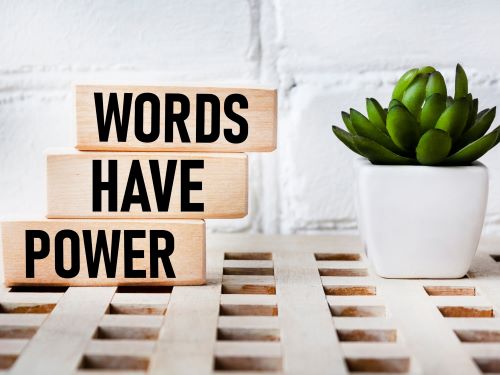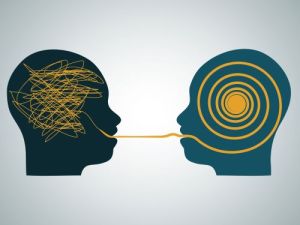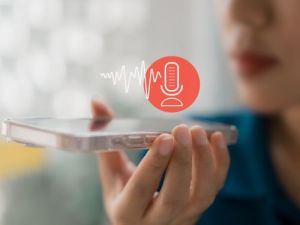
Making content accessible ensures that all users, including people with disabilities, can easily understand and engage with information. Whether you are creating content for a web page, a document, or digital media, using plain language and easy-to-read texts improves clarity and usability.
Accessible writing removes barriers that make complex information difficult to process. It benefits people with learning disabilities, low literacy skills, and non-native speakers while also improving the overall user experience.
This article explains how to implement accessibility in content creation, focusing on plain language, easy-to-read language, and essential tools like alternative text, screen readers, and assistive technology. By applying these guidelines, you can make your message clearer, improve digital accessibility, and comply with important regulations like the European Accessibility Act (2025).
Why Accessible Content Matters
Making content accessible is not just about compliance, it is about inclusion, usability, and business growth. Clear and structured writing helps most people, but it is essential for individuals with learning disabilities, low vision, and other challenges.
Key Benefits of Accessible Content:
- Wider Audience Reach: Many users struggle with complex information. Simple language makes content easy to understand and improves engagement.
- Legal Compliance: Regulations like the European Accessibility Act (2025) require businesses to provide accessible digital materials.
- Improved SEO and Traffic: Search engines favor plain language and well-structured web pages, leading to higher rankings and increased organic traffic.
- Better User Experience: Screen readers, alternative text, and short sentences enhance usability for all readers.
- Stronger Brand Reputation: Companies that prioritize digital accessibility show commitment to inclusivity, building trust with their audience.
Plain vs. Easy-to-Read Language: What’s the Difference?
Both plain language and easy-to-read language help make content accessible, but they serve different audiences and have distinct guidelines. Understanding these differences allows businesses to choose the right approach for their materials.
What is Plain Language?
It is clear, concise, and structured writing that helps people quickly understand information without unnecessary complexity. It is widely used in legal documents, healthcare materials, and business communication.
🔹 Key Features of Plain Language:
✔ Avoids jargon and technical terms.
✔ Uses familiar words and clear sentence structure.
✔ Prioritizes active voice over passive voice.
✔ Enhances usability with headings, lists, and visuals.
💡 An example of Plain Language:
Instead of: “Remuneration will be disbursed subsequent to project finalization.”
Use: “You will be paid after the project is completed.”



What is Easy-to-Read Language?
This is a simplified version of plain language, designed for people with learning disabilities, cognitive impairments, or low literacy skills. It follows strict rules to make information easy to process.
🔹 Key Features of Easy-to-Read Language:
✔ Uses short sentences, with one idea per sentence.
✔ Avoids difficult words and replaces them with simple language.
✔ Includes images or symbols to support the message.
✔ Uses clear formatting (large fonts, bullet points, and white space).
💡 An example of Easy-to-Read Language:
Instead of: “Your payment will be processed after we complete the project.”
Use: “We will pay you when we finish the project.”
Which Should We Use?
Aspect
Plain Language
Easy-to-Read Language
Target Audience
General public, professionals, and businesses
People with learning disabilities, low literacy, or language barriers
Complexity
Simplified but still uses standard vocabulary
Very basic vocabulary with minimal grammar structures
Tone
Professional and approachable
Very simple, child-friendly tone
Purpose
To improve clarity and efficiency in communication
To make information accessible to those who struggle with comprehension
Visual Elements
Headings, bullet points, and charts
Heavy use of visuals, icons, and symbols
Best Use Cases
Legal documents, healthcare materials, official communication
Public service announcements, instructions, or legal rights for people with disabilities
💡 Business Tip:
Many companies need both plain language and easy-to-read language for different materials. For example, a bank might use plain language for contracts and easy-to-read language for customer instructions.
How to Implement Accessibility in Your Content
Making content accessible requires careful planning, clear writing, and a structured process to ensure all users, including people with disabilities, can understand the information easily. Here are the key steps in creating accessible content for a web page, document, or digital platform.
1. Use Plain or Easy-to-Read Language
- Choose plain language for general audiences and easy-to-read language for people with learning disabilities or low literacy skills.
- Keep sentences short and use simple language that makes sense to the reader.
- Avoid jargon and technical terms unless necessary and always explain them clearly.
💡 For example:
❌ Instead of: “Facilitate user engagement through interactive digital experiences.”
✅ Use: “Help users interact easily with the digital tools.”
2. Structure Content for Readability
- Break up large blocks of text with headings, bullet points, and short paragraphs.
- Use active voice instead of passive voice to make instructions clearer.
- Format text properly: bold key topics, highlight important information, and ensure the message is easy to find.
3. Add Alternative Text for Images
- Alternative text (alt text) describes images, allowing screen readers to convey information to people with visual impairments.
- Keep alt text descriptions simple and avoid redundant words like “image of” or “picture of.”
💡 An example of good Alt Text:
Instead of: “Picture of a person using a laptop.”
Use: “A woman typing on a laptop at a desk.”
4. Ensure Web Accessibility with Assistive Technology
- Use plain language tools to check readability and test with screen readers.
- Include clear link text (e.g., “Read more about accessibility” instead of “Click here”).
- Design visual content with high contrast and easy-to-read fonts for low vision users.
5. Follow Accessibility Guidelines
- Implement digital accessibility standards, such as WCAG (Web Content Accessibility Guidelines).
- Ensure web pages are keyboard-navigable and support assistive technology.
- Use translations where necessary to make content available in different languages.
💡 Business Tip:
Companies that implement accessibility not only comply with regulations like the European Accessibility Act (2025) but also increase audience engagement and boost brand trust.
How AI Helps Make Content More Accessible
Artificial Intelligence (AI) is transforming the way we create accessible content, making it easier to implement plain language, generate easy-to-read texts, and enhance digital accessibility. Businesses can leverage AI to automate processes, ensure compliance with accessibility guidelines, and improve the overall user experience for people with disabilities.
1. AI Tools for Plain or Easy-to-Read Content
AI-driven plain language tools analyze text and suggest ways to make it easier to understand. These tools help writers:
✔ Identify complex sentences and simplify them into short sentences.
✔ Detect passive voice and convert it into active voice for clarity.
✔ Recommend familiar words instead of technical terms.
💡 For example:
❌ “Utilizing an advanced methodology, we optimize business performance through data-driven insights.”
✅ “We use smart methods to help businesses perform better with data.”
2. AI-Powered Screen Readers and Assistive Technology
Many people rely on assistive technology, such as screen readers, to access digital content. AI improves these tools by:
✔ Providing accurate alternative text for images, helping users with low vision.
✔ Enhancing translation services for multilingual audiences.
✔ Converting text into audio descriptions, making visual content accessible.
3. Automating Accessibility Testing with AI
AI can scan a web page to identify accessibility issues, such as:
✔ Missing alt text on images.
✔ Poor contrast in visual content.
✔ Unclear link text that does not convey information effectively.
💡 Business Tip:
Companies can use AI-powered testing tools to ensure their websites meet the WCAG accessibility standards, reducing the need for manual audits and saving time.
4. AI for Real-Time Content Adaptation
AI-powered tools can adjust content dynamically, based on user preferences, such as:
✔ Enlarging fonts for users with low vision.
✔ Simplifying content for people with learning disabilities.
✔ Offering easy-to-read summaries of complex information.
Who Benefits from Accessible Content?
Creating accessible content is not just about meeting compliance guidelines, it’s about making information available and useful for all users. While accessibility directly supports people with disabilities, it also benefits a much wider audience by improving usability, readability, and engagement.
Here’s a look at who benefits from plain language, easy-to-read texts, and improved digital accessibility.
1. People with Disabilities
Millions of people with disabilities face challenges when accessing digital content. Properly structured web pages, short sentences, and alternative text ensure that information is easy to understand and usable.
💡 How Accessibility Helps:
✔ Screen readers help people with low vision to navigate content.
✔ Alternative text ensures images convey meaning for visually impaired users.
✔ Simple language makes it easier for people with learning disabilities to process information.
2. People with Learning Disabilities and Cognitive Challenges
Learning difficulties, such as dyslexia, ADHD, or cognitive impairments, can make it difficult for people to understand complex information. Plain language and easy-to-read texts make reading easier by:
✔ Using familiar words and short sentences.
✔ Avoiding passive voice and confusing technical terms.
✔ Breaking down complex information into clear steps.
💡 An example of Easy-to-Read Language:
❌ “Your payment will be processed upon project finalization.”
✅ “We will pay you when we finish the project.”
3. Non-Native Speakers and Low-Literacy Users
Not everyone speaks the language fluently, and many users struggle with complex writing. Using plain language helps non-native speakers and those with low literacy skills to understand information without difficulty.
💡 How Accessibility Helps:
✔ Plain language tools simplify content for better comprehension.
✔ Translation support makes information available in different languages.
✔ Clear formatting improves readability and user engagement.
4. Older Adults and People in Stressful Situations
Aging populations often face cognitive decline, making it harder to process complex information. Additionally, people in high-stress situations, such as those reading emergency instructions, benefit from easy-to-read content.
💡 How Accessibility Helps:
✔ Large fonts and simple formatting make reading easier.
✔ Straightforward language reduces confusion.
✔ Clear headings and bullet points help readers find important information quickly.
5. Businesses and Website Owners
Companies that implement accessibility benefit from:
✔ Better SEO rankings since search engines favor plain language and structured content.
✔ Higher customer engagement, as Accessible content makes a website easier to navigate.
✔ Legal compliance, because laws like the European Accessibility Act (2025) require businesses to provide accessible content.
💡 Business Tip:
Investing in plain language and accessibility builds brand trust and expands market reach, leading to more conversions and customer satisfaction.
The Business Benefits of Accessibility
Investing in accessible content is not just about compliance, it’s also a smart business strategy. Companies that prioritize plain language, easy-to-read texts, and digital accessibility gain a competitive edge, improve their SEO rankings, and enhance the overall user experience. Here’s how accessibility benefits businesses:
1. Improved Search Engine Rankings (SEO Boost)
Search engines like Google favor plain language and structured content, making accessible content a key factor in SEO success.
💡 How Accessibility Improves SEO:
✔ Short sentences improve readability and engagement metrics.
✔ Alternative text (alt text) helps Google index images for search visibility.
✔ Clear headings and link text make web pages easier to navigate.
For example:
Websites that implement accessibility guidelines tend to rank higher because they provide clear, easy-to-read content that search engines can crawl efficiently.
2. Higher Engagement and Conversions
When users find content easy to understand, they stay longer, interact more, and are more likely to become customers.
💡 How Accessibility Increases Engagement:
✔ Plain language makes messages clear and direct, reducing bounce rates.
✔ Easy-to-read content helps most people quickly grasp key topics.
✔ Assistive technology compatibility allows people with disabilities to interact fully with the content.
Business Case:
A study showed that websites with an accessible design see higher user retention and increased customer loyalty.
3. Legal Compliance and Risk Reduction
With the European Accessibility Act (2025) and other global regulations, companies are required to make their web pages and digital content accessible. Failure to comply can lead to legal issues, fines, and reputational damage.
💡 Why Compliance Matters:
✔ Ensures content is accessible to all users, reducing legal risks.
✔ Demonstrates corporate social responsibility and inclusivity.
✔ Positions your business as an industry leader in digital accessibility.
For example:
Major corporations have faced lawsuits for failing to meet web accessibility standards. Proactively implementing accessibility prevents such risks.
4. Expanded Audience and Market Reach
An estimated 15% of the world’s population has some form of disability. By making content accessible, businesses can reach a broader audience, including people with learning disabilities, cognitive impairments, and low literacy skills.
💡 How Accessibility Expands Your Market:
✔ Simple language makes content available to non-native speakers.
✔ Alternative text and assistive technology support users with low vision.
✔ Easy-to-read formatting benefits older adults and people under stress.
For example:
Companies that prioritize accessibility often gain brand trust, attracting diverse audiences and increasing customer loyalty.
5. Stronger Brand Reputation and Customer Trust
Businesses that invest in plain language and digital accessibility build a reputation for inclusivity and innovation.
💡 Why Trust Matters:
✔ Consumers are more likely to purchase from brands that care about accessibility.
✔ A strong commitment to inclusivity can be a Unique Selling Point (USP).
✔ Clear, structured content improves brand credibility.
Business Tip:
Making your message easy to understand ensures all users can engage with your brand, leading to more loyal customers.
How to Get Started with Accessible Content at Skrivanek
At Skrivanek, we specialize in creating accessible content that meets the global accessibility standards, improves user experience, and enhances SEO performance. Whether you need plain language writing, easy-to-read content, or multilingual accessibility solutions, our experts help businesses implement best practices and comply with regulations like the European Accessibility Act (2025).
Here’s how your business can get started with accessible content today.
1. Assess Your Current Content Accessibility
Before making changes, it’s crucial to evaluate your existing content to identify barriers that make it difficult for users with disabilities to understand information or navigate your web pages.
💡 How Skrivanek Can Help:
✔ Content audits to check for plain language compliance and digital accessibility.
✔ Testing with assistive technology like screen readers to assess usability.
✔ Identifying issues like passive voice, complex sentences, and missing alt text.
2. Choose the Right Language Approach: Plain or Easy-to-Read?
Different audiences require different levels of content simplification. Skrivanek helps businesses determine the right approach based on their target users.
💡 Our Expertise in Content Adaptation:
✔ Plain language solutions for official documents, websites, and customer communication.
✔ Easy-to-read content for people with learning disabilities, cognitive challenges, or low literacy skills.
✔ Translation services to make content accessible in multiple languages.
3. Implement Accessibility Best Practices
Making content accessible requires following key guidelines to ensure that all users can understand and interact with the information easily.
💡 Skrivanek’s Accessibility Services Include:
✔ Rewriting content into short sentences and simple language.
✔ Adding alternative text to images for improved screen reader support.
✔ Structuring visual content with clear headings, bullet points, and readable fonts.
✔ Creating translations that maintain accessibility standards.
4. Test and Optimize for Maximum Accessibility
Once changes are implemented, it’s essential to test content usability and make adjustments based on user feedback.
💡 Skrivanek helps with Testing & Optimization Services:
✔ Conducting user testing with individuals who rely on assistive technology.
✔ Ensuring all web pages follow WCAG guidelines for accessibility compliance.
✔ Ongoing content updates to maintain accessibility standards over time.
5. Partner with Skrivanek for Accessible Content Solutions
At Skrivanek, we provide businesses with customized accessibility solutions to ensure their digital content is inclusive, effective, and legally compliant. Whether you need:
✔ Plain language rewriting.
✔ Easy-to-read adaptations.
✔ Translation and localization for accessibility.
✔ Compliance with the European Accessibility Act (2025).
We have the expertise to help.
💡 Get Started Today:
📩 Contact Skrivanek to learn how we can make your content more accessible and improve audience engagement.
Why Choose Skrivanek?
💡 Expertise in Accessibility – Our team understands plain language principles, easy-to-read formats, and web accessibility standards.
💡 Tailored Solutions – We adapt content to your target audience, ensuring it is clear, engaging, and fully accessible.
💡 SEO & Compliance Benefits – Our services align with WCAG guidelines, the European Accessibility Act (2025), and best SEO practices to help your business rank higher and reach more users.
💡 Multilingual Accessibility – We provide translations that maintain content clarity and accessibility across multiple languages and cultures.
How to Get Started
✔ Step 1: Contact Skrivanek for a free consultation on your content accessibility needs.
✔ Step 2: Our experts analyze your current content and recommend the best plain language or easy-to-read adaptations.
✔ Step 3: We rewrite, translate, and optimize your content for maximum accessibility and engagement.
✔ Step 4: Your new accessible content will be ready to reach a wider audience and improve compliance.
📩 Let’s make your content accessible today!
👉 Contact Skrivanek now to discuss your project.
Making content accessible is no longer optional—it’s a business necessity. By working with Skrivanek, you ensure your content is inclusive, legally compliant, and optimized for success.
📩 Get in touch with our accessibility experts today and start creating content that works for everyone!

